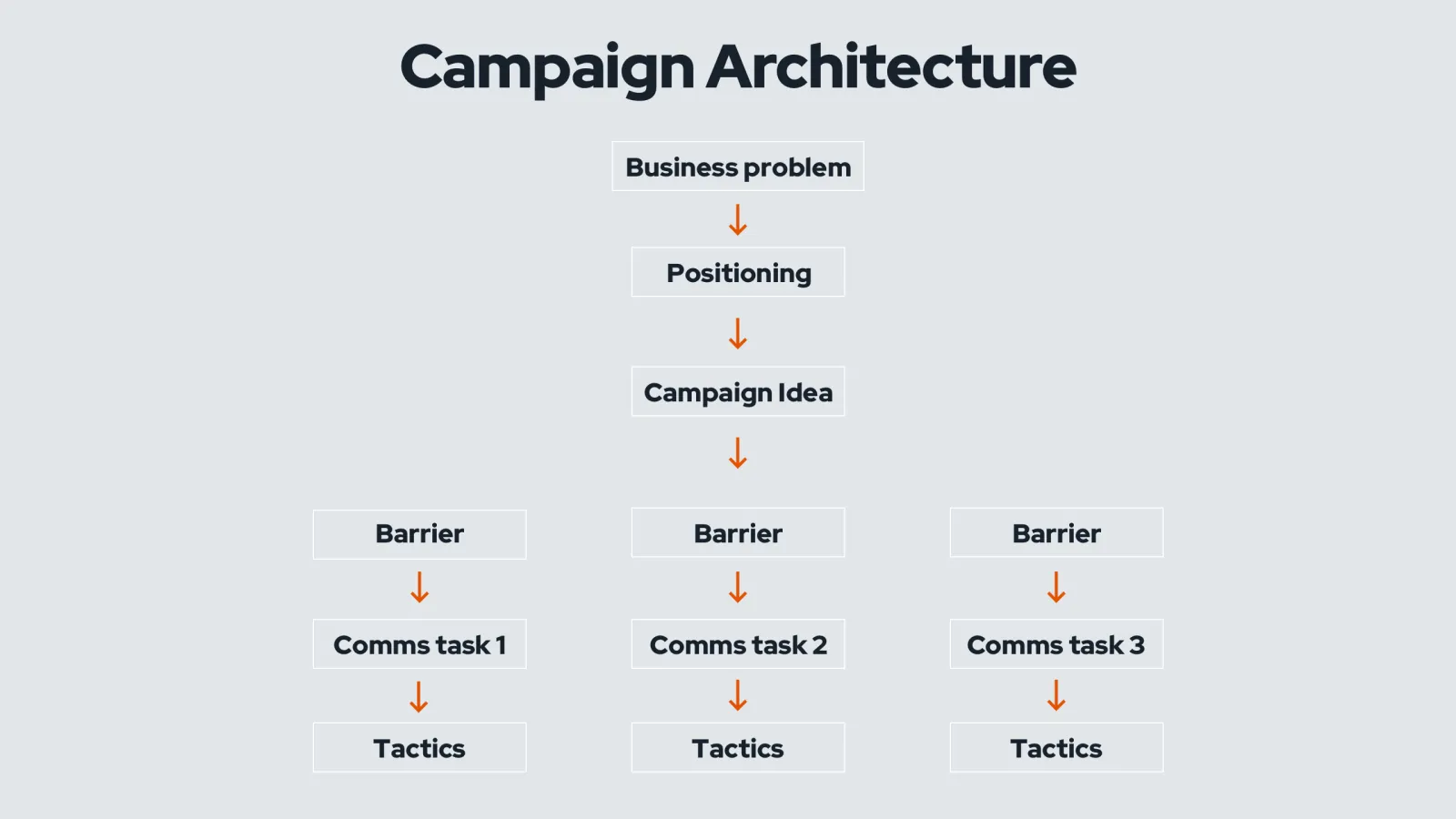The difference between a comms plan and a marketing plan
We marketers sure love our verbiage and jargon. Branding, marketing, communications planning, where is the line drawn? What’s the difference?
One thing we’ve noticed that gets people occasionally hung up is the difference between a marketing plan and communications plan. They’re both vital to the success of a brand but serve very different purposes. Generally, every brand has a marketing plan. However, not everyone has a comms plan. Let’s take a look at the difference between the two and how when to use them.
Marketing Plan
A marketing plan is the high-level guiding document that guides the overall direction of achieving the marketing goals a business has.
Whereas a marketing campaign and its accompanying comms plan address one specific marketing goal, the marketing plan serves as the general road map that weaves everything together. The comms plan ladders up into the marketing plan and then up into the overall business plan.
Marketing plans last for a longer period of time (typically a year) and usually contain the following:
- Market research and analysis
- Marketing and financial goals and objectives
- Target audience breakdowns
- Marketing strategies covering the 4 P’s of marketing (product, price, place, and promotion)
- Budget: This component of a marketing plan consists of developing a marketing budget, which will allow you to plan for marketing expenditures.
- Monitoring and evaluating (KPI's and how you'll respond)
- An execution plan (or a marketing plan checklist) which breaks down tasks and tactics as well as timing and responsibilities.
Though marketing plans can differ by industry, they generally follow a similar structure.
Comms Plan
Now, a communications plan is a very specific tool which we’re huge fans of. Its primary use case is to help layout an integrated execution plan of a marketing campaign. With so many channels available to marketers these days, the comms plan was born out of a necessity to think strategically about how to integrate all these executions under one overarching concept, while still being bespoke to each channel.
Here is a sample comms plan we use inspired by Julian Cole, a well-revered expert on comms planning.
Let’s take a look at each section and break it down.
Business Problem
This is the connection point to the business/marketing plan. While it is crucial to frame most of the campaign architecture through a consumer mindset as opposed to the business’, the business problem is the exception. It is generally driven through analysis of the marketing plan and could be something such as:
“We’re seeing a decrease in subscriptions to Spotify by Generation Z because that generation sees the platform as the place for annoying Millennials”
Positioning
Positioning refers to the intersection of where the brand sits in the context of the product category, culture, and consumer sentiment. It is driven by uncovering insights quantitatively and qualitatively. It is by comparing the positioning to the business problem that we can begin align the marketing campaign and its initial goals. For example, the positioning of Spotify could be:
“Spotify is the streaming service for Neverlanders who will never grow old”
Campaign Idea
This represents the core concept of your marketing campaign. It will serve as the umbrella idea that connects to each comms task which we will describe below.
Barrier
Barriers are the specific pain points being addressed within that specific channel/execution of the campaign. These barriers are uncovered through a mapping of the consumer journey starting from the high-funnel down into the final purchasing and advocacy touchpoints. Once complete, we can discern what are the specific barriers to accomplishing the goal of the campaign within said touchpoint.
An example of a barrier could be:
“Gen Z’s on TikTok feel like any platform outside of it is just for old people”
Comms Task
With the barrier established, it is time to develop how we will solve that barrier. To do this, we work through the specific communications task. In relation to the previous example, the task could be to convince Gen Z’ers on TikTok that Spotify is just as youthful as TikTok itself.
Tactics
Last but not least, is the tactics themselves. This is where we prescribe the specific channel and tactic that the creative will live to solve the aforementioned barrier. In this case, one tactic could be for Spotify to hire TikTok influencers to develop branded playlists of their favourite songs on Spotify to be shared on Tik Tok to their followers.
This process of outlining the barrier and task repeats itself until all touchpoints of a consumer journey map have been addressed and solved. As this occurs, an integrated and strategic execution plan of your marketing campaign emerges.
The benefits of following an integrated comms plan such as this are proven and substantial. It leads to increased emotional responses and overall branding perception as seen in the studies below.
Conclusion
In summary, the marketing plan is the high-level plan of a brand that focuses on more than just an advertising campaign. It includes pricing strategies, distribution strategies, and is much more focused on driving sales from a high-level perspective. A comms plan is a specific tool used to think of the rollout of an advertising campaign from a more integrated and strategic point of view. It is driven through analysis of the consumer mindset and is used to tap the consumer at specific points within the purchasing process.
Both plans serve very different purposes but often get mixed up. However, both are fundamental to the success of a clear and discerning brand that knows exactly where it stands and where it is headed. You might also like our post titled The Difference Between Branding and Marketing.
Contact MMGY Origin
Specializing in the outdoor industry and tourism, MMGY Origin has a team of experts who robust, digitally driven, creative and marketing services to clients across North America.
If you need help developing a communications plan or marketing plan, we can help. Feel free to contact us.
Our monthly newsletter “Insights on The Outdoors” offers additional tips on outdoor marketing. To subscribe, visit https://www.originoutside.com/newsletter









